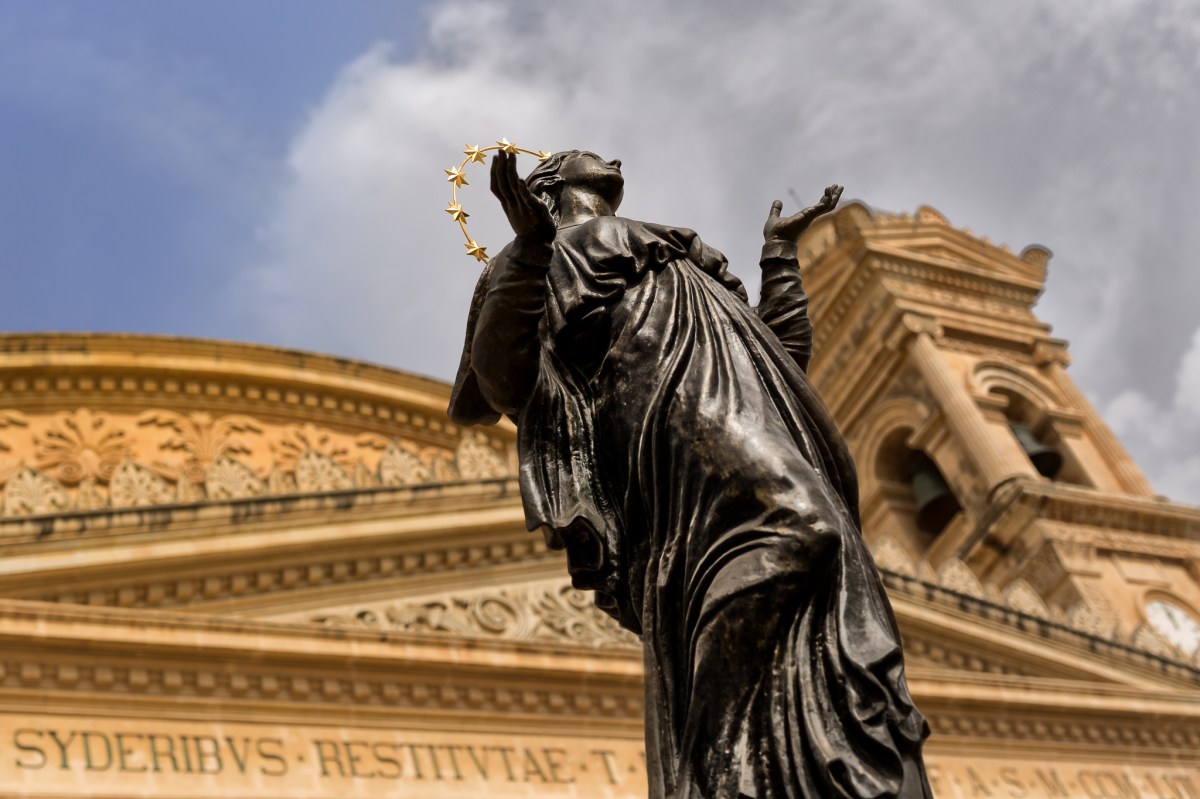The feast of the Assumption of Mary has been celebrated in Malta since time immemorial.
Lenten Campaign 2025
This content is free of charge, as are all our articles.
Support us with a donation that is tax-deductible and enable us to continue to reach millions of readers.
This article is the third part of the series “Malta Under the Gaze of Mary.”
Even though the Assumption into Heaven of Mary, the title by which the Blessed Virgin Mary is the Patroness of Malta, was only declared a dogma of the Catholic faith on November 1, 1950, by Pope Pius XII [1], it has enjoyed considerable prominence in Christian tradition both in Eastern as well as in Western Christendom, and it has been celebrated on August 15 since time immemorial.

Read more:
When the plague hit Malta, the Knights made a promise: A Marian miracle followed
While some Catholics and some biblical scholars from other traditions argue that Revelation 12 reflects the Assumption of the Virgin, the New Testament may otherwise be silent on the end Mary’s life on earth. “When the dragon saw that it had been thrown down to the earth, it pursued the woman who had given birth to the male child. But the woman was given the two wings of the great eagle, so that she could fly to her place in the desert, where, far from the serpent,…” (Revelation 12: 13-14). However, several early apocryphal sources, such as Transitus Mariae or Passing of Mary, the earliest extant historical writings on the Assumption, describe her death and burial in Jerusalem. The oldest of these, believed to have been composed in the 2nd century by Leucius Karinus, a disciple of John, is thought to be based on an original document from the apostolic era, and possibly by the Evangelist himself. These works are not accepted as part of the Christian canon of Scripture, but, according to the biblical scholar Lino Cignelli, “All of them are traceable back to a single primitive document, a Judaeo-Christian prototype, clearly written within the Mother Church of Jerusalem some time during the second century, and, in all probability, composed for liturgical use right at the Tomb of Our Lady.”
Another fascinating aspect of the Transitus Mariae is that the three burial rooms described in the Syriac version coincide with the data derived from archaeological excavations and discoveries. At one time the Transitus Mariae was thought to have originated in the 4th century or later, but certain theological terms used confirm an origin either in the 2nd or 3rd century. [2] [3]
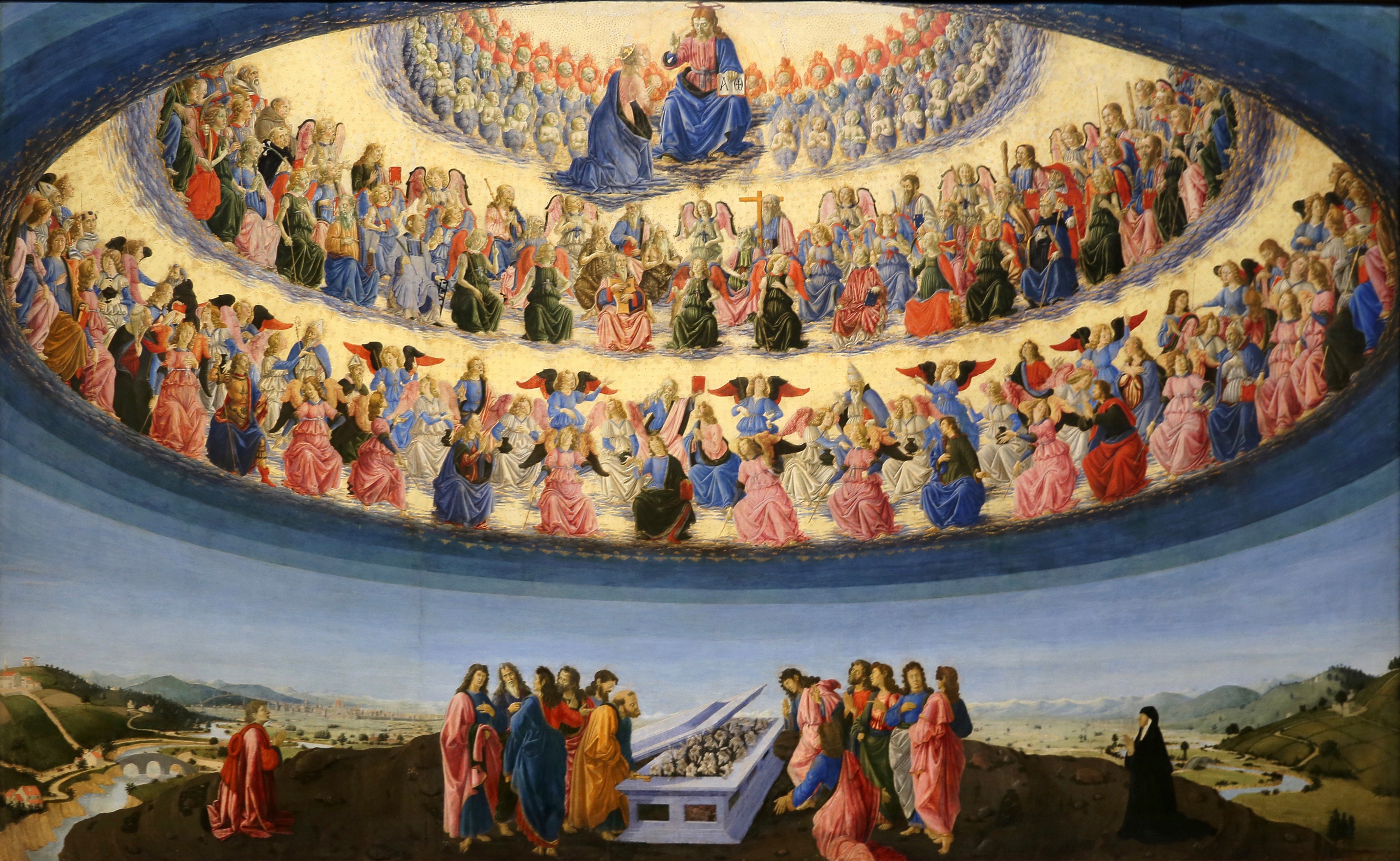
In c. 377, St. Epiphanius of Salamis wrote, “How will holy Mary not possess the kingdom of heaven with her flesh, since she was not unchaste, nor dissolute, nor did she ever commit adultery, and since she never did anything wrong as far as fleshly actions are concerned, but remained stainless?” (Panárion 42:12). [4]. Speculating on her death, later in the same manuscript (Panárion 78: 23), Epiphanius mulls over several possible endings to Mary’s life, but in the end he professes a strict agnosticism and concludes with very deliberate equivocation: “I am not saying that she remained immortal; but neither am I affirming that she died.” Nevertheless, at the same time, Epiphanius admits to knowing more about the subject than he is willing to disclose: “For I dare not say, and although I have some ideas, I keep silent: The holy virgin may have died and been buried – her falling asleep was with honor, her death in purity, her crown in virginity. Or she may have been put to death – as the scripture says, ‘And a sword shall pierce through her soul’ – her fame is among the martyrs and her body, by which light rose in the world, [rests] amid blessings. Or she remained alive, for God is not incapable of doing whatever he wills. No one knows her end.” Epiphanius also compares the Virgin with Elijah (whose body was assumed to heaven), which clearly affirms what he already hints at in Panarion 78: that traditions of the Virgin’s Dormition and Assumption were already in circulation prior to the later 4th century. [5]

Read more:
Malta, under the gaze of Mary
During the beginning of the 6th century, the August feast in Palestine and Syria was definitively identified with the Assumption. Emperor Maurice (582-602) ordered the celebration of the Assumption or Dormition feast throughout his empire. According to recent studies, this feast could have already been held in Jerusalem sometime about the 2nd and 3rd century. In the West, its earliest traces are found during the last decades of the 5th century. Pope Sergius (AD 687-701) included the Assumption among the principal feasts held in Rome. In one of his homilies on the Dormition, John Damascene (c. 750) teaches that Our Lady’s death is a premise of her imminent glorification: “Even though your most holy and blessed soul was separated from your most happy and immaculate body, according to the usual course of nature, and even though it was carried to a proper burial place, nevertheless it did not remain under the dominion of death, nor was it destroyed by corruption. Indeed, just as her virginity remained intact when she gave birth, so her body, even after death, was preserved from decay and transferred to a better and more divine dwelling place. There it is no longer subject to death but abides for all ages.” [6]
The Assumption of the Blessed Virgin Mary and Malta
Devotional life in Malta has always given special prominence to the Assumption. In Malta, it is known as Santa Marija Assunta (or just Santa Marija) – the Assumption of St. Mary. Santa Marija has always been the most popular feast and fount of widespread devotion. Its early origins however are difficult to trace. A brief survey of the topographical distribution of the Assumption churches indicates in a highly evident manner the deep penetration of this Marian devotion in Maltese religious tradition. Case in point, all existing parishes till the beginning of the 17th century, as well as the more important inhabited parts of the Island, had at least one Assumption church or altar. Also, three of the oldest parishes that we know existed in the Maltese Islands are dedicated to the Assumption of the Blessed Virgin: that of Birkirkara which already existed in 1402 (today St. Helen’s Basilica); the Matrix church within the Gozo’s Citadel, mentioned in 1435; and the parish of Birmiftuħ, today Gudja, which is mentioned in the Rollo de Mello of 1436.
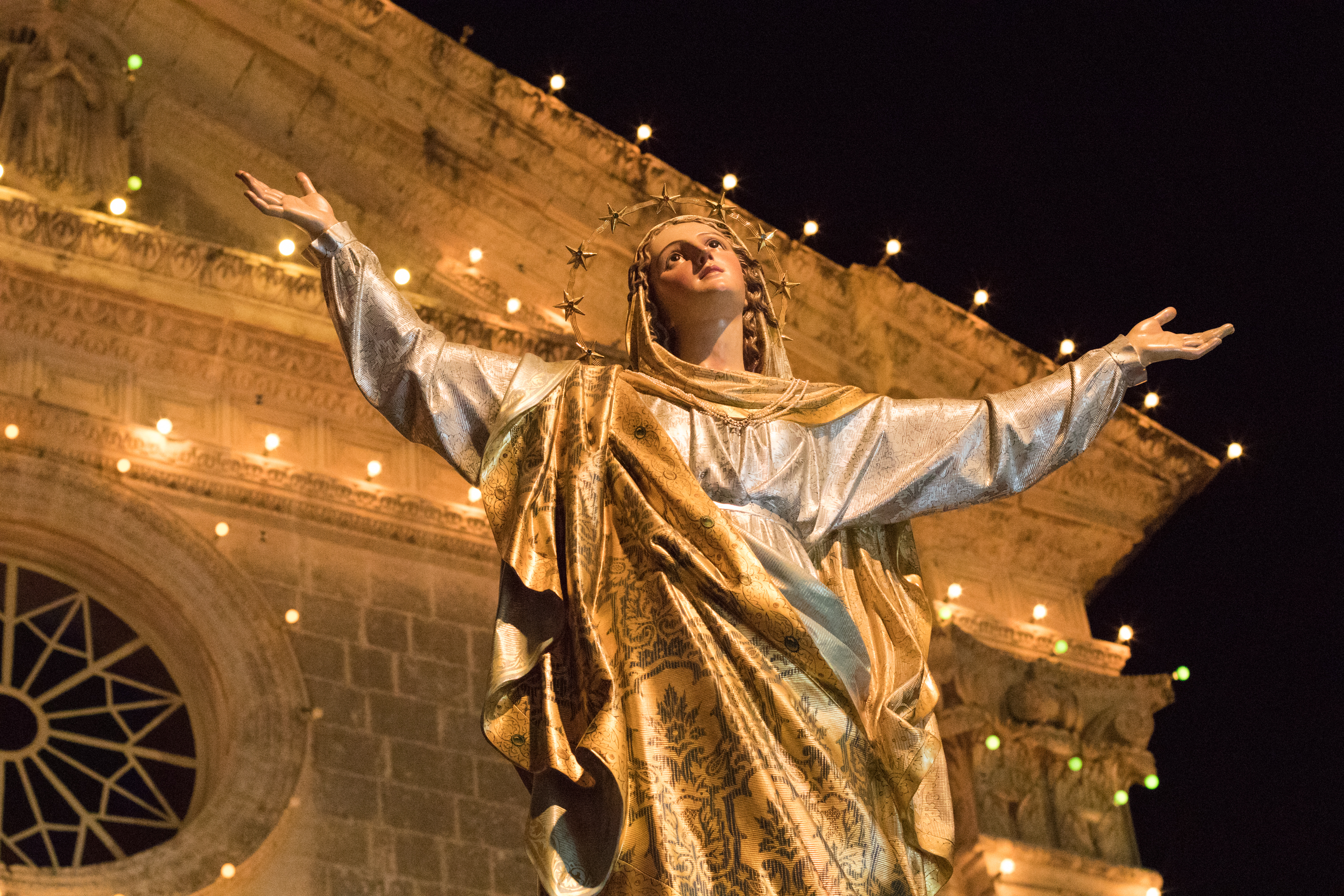
By 1800 Malta had 92 dedicated churches and 22 altars, most of which already existed, and some where already very old, when Mgr. Pietro Dusina did his Apostolic visit in 1575. Also, it was an age-old tradition to have more than one altar for the same title. In fact, in the old church of Birkirkara there were 5 altars dedicated to the Assumption, two in Birmiftuħ, four in Żebbuġ, and two in Żurrieq. Some cases are really mind-blowing: for instance, in the limits of Siġġiewi there were 12 chapels dedicated to the Assumption, 10 in Birkirkara and another 10 in Qormi, five in Naxxar, Żurrieq and Lija, four in Żebbuġ and Żejtun, and three in Attard, Rabat, and Vittoriosa. Also noteworthy is the fact that one of the oldest confraternities, that of Attard, founded in 1541, was dedicated to St. Mary. But how many of these numerous medieval churches and chapels survived? Not many, since most were neglected and were very likely profaned canonically. Also, a few of the survivors had their dedication changed. Along the years about 50 churches were lost, not including those whose title was changed. Among the lost chapels is the chapel of Santa Marija Assunta on Filfla (Filfla is a minuscule islet, with an area of just 0.023sq mi, standing some 4.5 kilometres south of Malta); while among the survivors, there is the Santa Marija chapel of Kemmuna, which is already mentioned in 1274 documents. So for centuries the Assumption was literally in every corner of the Maltese archipelago!

Read more:
The ancient Marian icons of the Greek Catholic Church of Our Lady of Damascus in Valletta, Malta
Notwithstanding these changes and transitions, today, the Assunta is still the Patroness of the people of the Maltese Islands, and resides in the profoundness of their hearts. Indeed, we still have nine parishes in Malta whose main feast is Santa Marija Assunta – on August 15 or a close date. These are Attard, Mosta, Għaxaq, Gudja, Mqabba, Qrendi, Birkirkara, Dingli, and Mġarr and two in Gozo at Rabat and Żebbuġ. For the Church this is a Holy Day of Obligation and is regarded as the greatest feast day because of the number of parishes and chapels involved in celebrations. Although it is mainly associated with seven parishes that celebrate the feast on the established day, in a number of other churches solemn processions are held bearing the statue of the Virgin Mary, including at the Tas-Samra Church of Ħamrun and the church dedicated to Our Lady of Miracles of Lija. There are similarities in the celebrating parishes, with a number having rather similar titular statues. [6] [7]
The Assumption and Gozo
The National Marian Shrine of Gozo is the Madonna Ta’ Pinu Sanctuary, which is dedicated to the Assumption. As I had conveyed in the article on this Shrine, published on August 15, 2020, the beginnings of the devotion to the Blessed Virgin of Ta’ Pinu are so ancient that they are lost in the mist of time. The Cathedral of Gozo, located in the principal town of Victoria, is also dedicated to the Assumption. An interesting point related to this town, is that a centuries-old tradition recorded by the Gozitan historian De Soldanis in the middle of the 18nth century relates how the Gozitans, soon after the shipwreck of St. Paul in Malta (in 60) and their eventual conversion to Christianity, dedicated their principal Roman pagan temple to the Mater Dei (Mother of God). The account may not be 100% accurate, but it contains a lot of truth. Indeed, during the building of the present cathedral church, between 1697 and 1711, abundant archaeological remains of a temple dedicated to Juno dating from c. 27 B.C. were unearthed. The area had been the site of a church dedicated to the Assumption since Antiquity. In 1435, the said church was already the matrice or major church for the whole island of Gozo.

Read more:
The miraculous story of Our Lady of Ta’ Pinu National Shrine, in Gozo
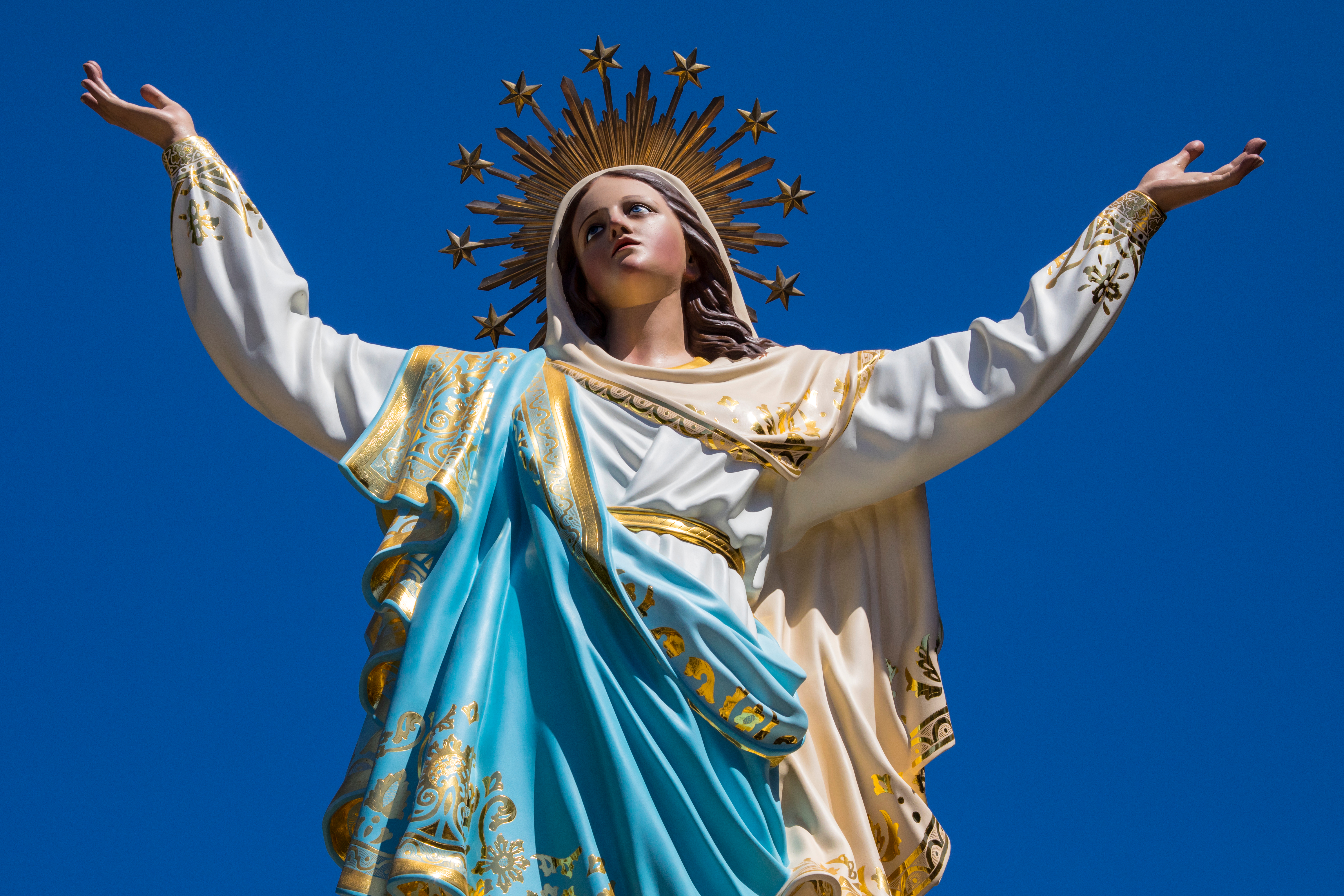
Another interesting fact is that one of the most ancient Christian places of worship in Malta and Gozo is the site of the chapel dedicated to the Immaculate Conception in Qala. This chapel was originally dedicated to the Assumption. This Marian site predates the present church and is so ancient that no one can identify the exact date of its beginnings. In fact, this Marian sanctuary can be traced back to the 6th century, during the time of Byzantine (535-870) rule under Belisarius, hence also the time of Bishop Julianus of Malta (553-592). It is also held that the Qala Sanctuary existed during the Arab era in Malta (870 to 1091). In 870, the Arabs had conquered Sicily as well as Malta from the Byzantines. A number of scholars are of the opinion that the original Christian church was built on the ruins of a pagan temple. This holy place used to fulfill the spiritual duties of eastern Gozo (‘Ogygia‘ in Homer’s Odyssey, where the mythological nymph Calypso lived). The Maltese Bishop Baldassare Caligares changed the title from Our Lady of the Assumption to that of the Immaculate Conception on November 21, 1615, also to fulfill a voto he had made to Our Lady, that if he was elevated to the Episcopate he would spread the devotion to this title of the Virgin. [6][8]
Graces granted by Santa Marija Assunta
Among the many graces granted to her Maltese children, like those already mentioned in the articles on Our Lady of Miracles of Lija and the Immaculate Conception of Sarria, two of the most well-known astonishing happenings occurred during World War II, namely, what became known as the Convoy of Santa Marija, and the bombing of Marija Assunta church (now basilica) of Mosta. Following is a brief account of these stories:
The Convoy of Santa Marija
During World War II, Malta played a key role in the Mediterranean theater of war. Allied naval and aerial forces used it to interrupt Axis convoys leaving from Italy to supply Rommel’s Afrika Korps Panzerarmee. Had Allied planes, submarines and other surface warships not sunk almost all shipping heading to supply the Axis forces in North Africa, these could have won the Battle of El Alamein, and thus nothing may have stopped Rommel from taking Alexandra and Cairo. Then the American forces would also have found it much more difficult to land in North Africa, while the Mediterranean could have become an Axis lake. The Maltese islands paid a heavy and terrible price for being an integral part of the Allied cause and for their brave defense. The Germans tried to subdue the Maltese by heavy day-and-night air raids. The carpet-bombing was so intense that it is estimated that 130 tons of bombs per square mile were dropped on Malta. The bombing and the naval blockade of the Island by Axis naval and aerial forces almost starved Malta into surrender.
However, the locals’ resilience in the face of the great odds stacked against the people, and their traditional Christian Faith preached to them by the Apostle Paul, sustained the populace through one of the darkest periods of their millennial history. This combination of resistance and faith was rewarded when, on August 15, 1942, precisely on the Feast of Malta’s Patroness, the Blessed Assumption, five out of a convoy of 14 ships made it to the Grand Harbour bringing crucial supplies, only a few days before the British Governor was to surrender the fortress.
It was one of the greatest naval victories. The convoy was protected by forty Allied warships and it was code named Operation Pedestal. It was a classic last-ditch attempt to relieve the Islands, and the Allies had no illusions that this was an almost impossible mission. Yet, Pedestal did achieve its purpose. This operation is considered one of the epic naval achievements of all times. The tanker SS Ohio limping into the Grand Harbour after suffering several crippling hits, with huge crowds on the bastions waving and saluting, has become an iconic symbol of hope, resistance and faith. When the Ohio entered the Grand Harbour, the starving and destitute population attributed their deliverance to the interception of their beloved Santa Marija and hence this episode has always been called Il-Konvoj Ta’ Santa Marija (St. Mary’s Convoy). In an interview featured in The Malta Independent in 2009, Henry Miller, a veteran who survived both World Wars, wrote:
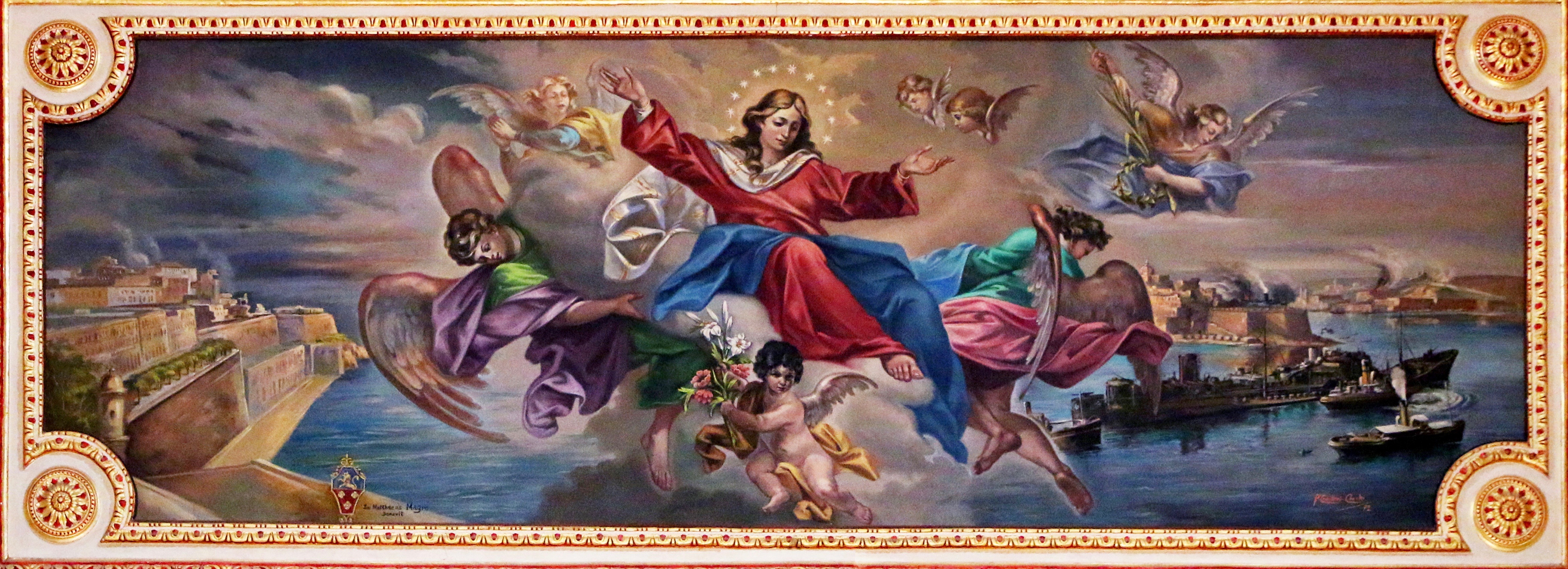
The miracle of the Santa Marija convoy and the arrival of the Ohio tanker was due to the thoroughness and determination of the British navy and the prayers of the Maltese people.” In his address to the people of Malta, Lord Gort said: “On my appointment as Governor of Malta I was entrusted to carry the George Cross to this Island Fortress. By command of the King, I now present to the people of Malta and her dependencies the decoration which His Majesty has awarded them in recognition of the gallant service which they have already rendered in the fight for freedom. How you have withstood for many months the most concentrated bombing attacks in the history of the world is the admiration of all civilized peoples …” [9]
The unexploded bomb in the Basilica of the Assumption, Mosta
Mosta is a town where devotion to Marija Assunta goes back a very long time. In 1575, the Apostolic Delegate had mistakenly recorded Mosta as a parish; however, the town actually achieved that status in 1608. This probably occurred because one of the churches was larger than the others, and so he deduced that it was the parish church of the village. This church was located near the Żiri Valley (Wied is-Sir / Wied Żiri), and was dedicated to the Assumption of the Blessed Virgin Mary. The local people continuously and fervently prayed in this church before an image of the Blessed Virgin – possibly another reason why the Apostolic Delegate believed it was Mosta’s parish church. After the Mostin had replaced the original church with a second one, this too became rather small for the growing community. Thus a Maltese architect of French descent, George Grognet de Vassé, proposed the rebuilding of Mosta’s church on neoclassical lines in emulation of the Pantheon in Rome – and this became the present Mosta Dome Church, popularly known as ir-Rotunda, dedicated to the Assumption of the Blessed Virgin Mary. Construction of the church began on May 30, 1833, and was completed in 1860. It is perhaps the most monumental church in Malta, with its massive unsupported cupola, that was at one point the third largest in the world! Mosta’s festa of St. Mary, or the Assumption of Our Lady, is celebrated annually on August 15.
In Mosta, even if only a very few lived outside the realm of poverty, the locals nevertheless did their best incurring in great sacrifices to build this massive church for the love of Our Lady. It is very hard to imagine that for 27 years they forfeited living decently; they could not bear to use their extra earnings for a glass of wine with friends or to buy gifts for their children. Instead, they used their savings, over and over, for the construction of the church – not for a year or two but for the whole stretch of time until the Rotunda was completed. Indeed, the actual construction of the Rotunda is a miracle. Building such an imposing church in Malta during these times, in a small village of “no importance,” is a touch from the Divine. [10]
The locals believed that the blessed Virgin would show Her gratitude for their sacrifices, and indeed she did. In 1942, during the Second World War the church could have been destroyed in one particular air raid when a number of bombs were dropped. All the 300 people praying in the church were left unharmed. Four bombs, one of which weighed 500 kg, penetrated the church through the dome, while smaller ones hit the bell tower and the parvis. Years later another 500kg bomb was found in a garden adjacent to the house of the sacristan behind the church.
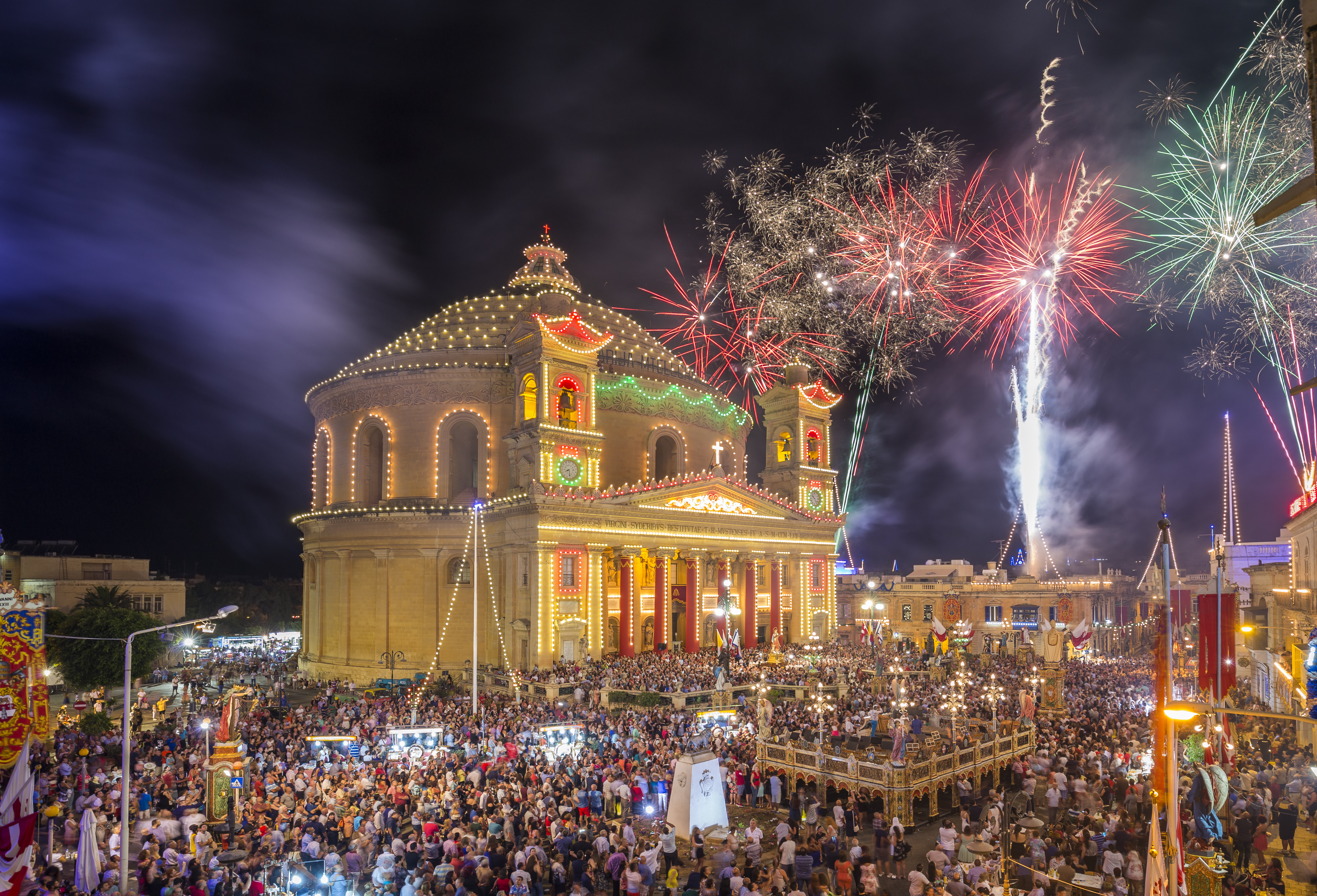
That day the bombers may have had the intention of destroying the church, as had been done in other localities. Yet, while bombs, stones and a large volume of debris did fell inside the church, and glass from various windows was shattered, yet, no one died or was injured! Coincidence? Not likely! One might ask, why the miracle in Mosta? Perhaps the Madonna wanted to show that the sacrifices and faith of their ancestors, when the Rotunda was built, did not go unnoticed. One may never know, but the Mostin consider this episode a miracle, for their church was saved and the people inside remained unscathed.
Make sure to visit the slideshow below to discover more!
Authored by Jean Pierre Fava Dip., B.Sc. (Hons.), M.Sc. H.Sc. from the Malta Tourism Authority and Comm. Prof. George Cassar B.A.(Educ.) (Melit.), M.Ed. (Melit.), Ph.D. (Melit.) from the Institute for Tourism, Travel and Culture – University of Malta
References
- Munificentissimus Deus – Defining the Dogma of the Assumption. Apostolic Constitution of Pope Pius XII. November 1, 1950. Accessed October / November 2020
- Marie de Nazareth – A Gesú Attraverso Maria. Encyclodédie Mariale. Il Transitus Virginis o Dormitio Mariae. Accessed October / November 2020
- See the Holy Land. Tomb of Mary. Accessed October / November 2020
- Behold the Truth – Discovering the What and the Why of the Catholic Faith. What Catholics Believe About the Assumption of Mary. Accessed October / November 2020
- Shoemaker S. The Cult of the Virgin in the Fourth Century: A Fresh Look at Some Old and New Sources. Origins of the Cult of the Virgin Mary. London. 2008
- Borg V. The Assumption of the Virgin Mary; Various Marian Devotions; and Bezzina J., The Veneration of Our Lady in Gozo. Marian Devotions in the Islands of St Paul – The Historical Society. Malta. 1983. Accessed 2019 – 2020
- Fiorini S. Santa Marija’ fit-Tradizzjoni Religuza Maltija (Saint Mary in Maltese Religious Tradition). Special edition of “L-Istandard”. July / August 1987.
- Buttigieg, C., “Tislima lill-Kwadru tal-Immakulata Kuncizzjoni. F’Għeluq l-400 sena tieghu fil-Qala, Għawdex” (“Greetings to the Painting of the Immaculate Conception. In its 400th year in Qala. Gozo”). Leħen il-Qala (Milied 2015 Issue)
- Castillo D. A. The Santa Marija Convoy: Faith and Endurance in Wartime Malta, 1940-1942. Lexington Books. 2012
- Cassar G. It-twelid ta’ parrocca gdida – Il-Mosta 1608 – 2008 (The birth of a new parish – Mosta 1608 – 2008). Mosta: Issue No. 5. 2007. Accessed in November 2020

